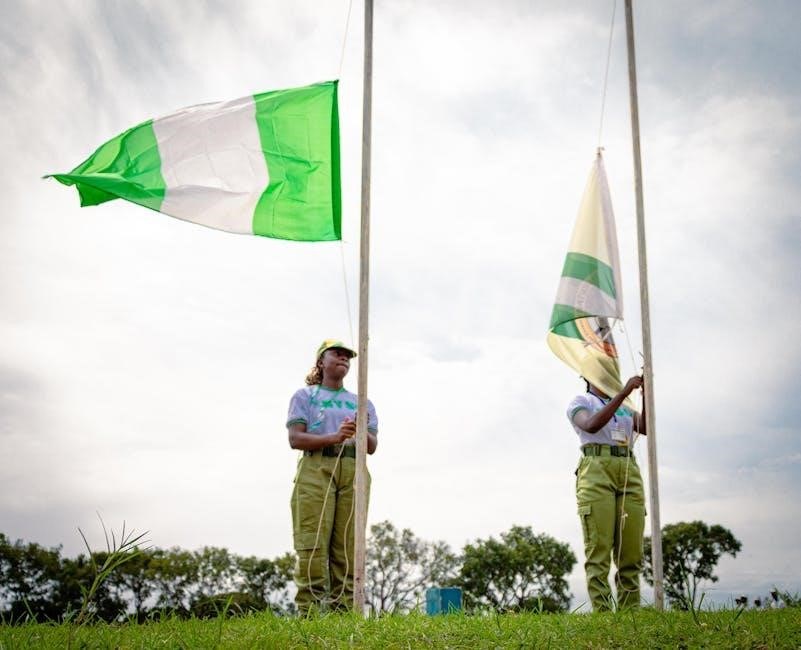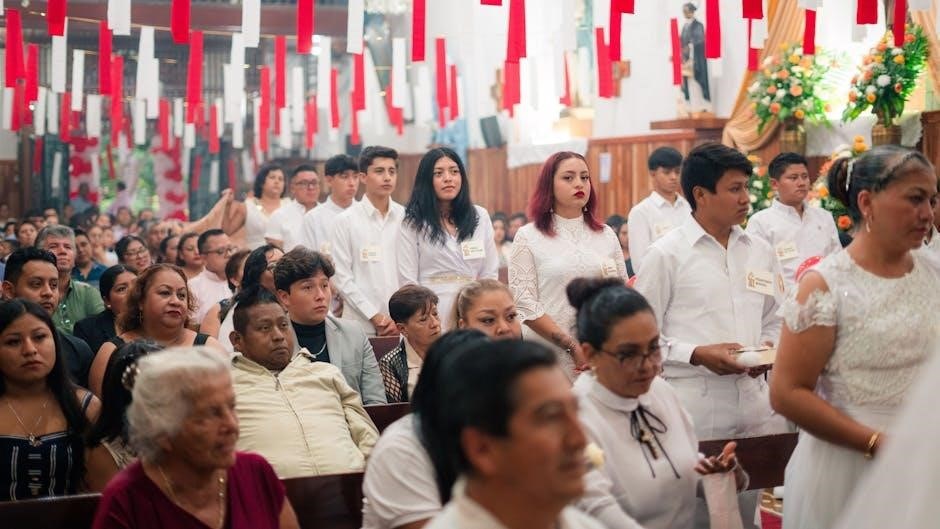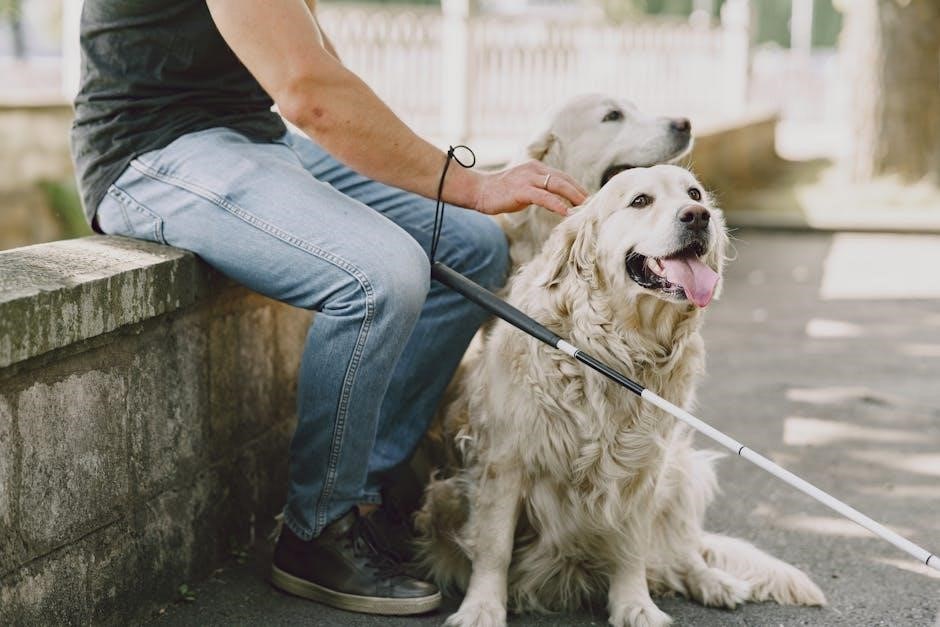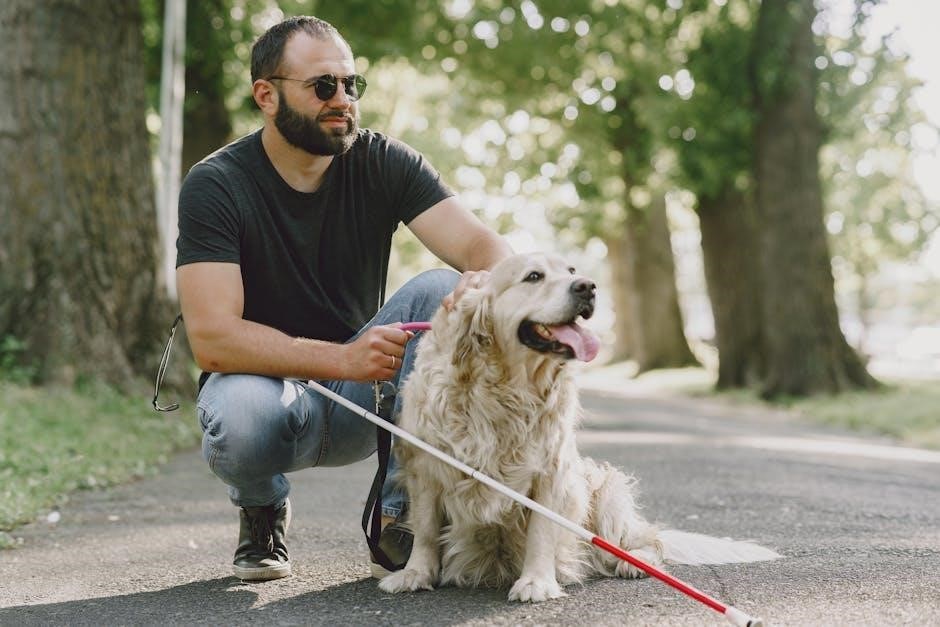Hog hunting offers an exhilarating outdoor adventure, guided by experienced professionals. Available year-round, it provides a unique chance to connect with nature and test your skills against wild hogs.
What is a Hog Guide Service?
A hog guide service provides expert-led hunting experiences, offering access to exclusive locations, professional guidance, and comprehensive support. Guides are experienced hunters with deep knowledge of hog behavior, habitats, and hunting techniques. These services often include tracking, stalking, and field dressing, ensuring a seamless experience for hunters of all skill levels. Many guide services operate on private lands, guaranteeing abundant hog populations and minimal competition. They may also offer additional amenities like lodging, meals, and equipment rentals. Reputable guide services prioritize safety, ethical hunting practices, and high success rates. Whether for trophy hunting or recreational purposes, a hog guide service enhances the overall hunting experience, making it both enjoyable and effective. With their expertise, hunters can focus on the thrill of the hunt while leaving logistics and challenges to the professionals. This ensures a memorable and successful hog hunting adventure.
Costs and Packages
Hog guide services offer various packages, with costs ranging from $350 to $800 per person, including lodging, meals, and guided hunts. Additional fees may apply for non-hunters and extras.
3.1 Accommodation Costs
Accommodation costs for hog hunting trips vary based on location and amenities. Lodging options range from basic hunting camps to luxury lodges, with prices starting at $150 per night for non-hunters. Full-board packages typically include meals and often cover transportation to and from hunting areas. Some guide services offer discounted rates for double occupancy, while others provide private rooms at an additional cost. Alcohol and special activities, such as ATV rentals or guided tours, may incur extra fees. It’s important to clarify what’s included in the accommodation package beforehand to avoid unexpected expenses. Many outfitters provide detailed pricing on their websites, making it easier for hunters to budget accordingly and plan their trip effectively.
3.2 Licensing and Fees
Licensing and fees for hog hunting vary by state and guide service. Typically, hunters must obtain a valid hunting license, which costs between $50 to $200 annually, depending on residency. Additional permits or tags may be required, especially for trophy or large hogs. Guide services often include these fees in their packages, but it’s essential to confirm. Some outfitters charge a flat rate per hunt, while others base fees on the number of hogs harvested. Costs may also cover services like field dressing and trophy handling. Licensing ensures compliance with local regulations and supports conservation efforts. Always check state-specific requirements before booking a hunt, as rules can vary significantly. Proper documentation and permits are crucial to avoid legal issues during your hog hunting adventure.
What to Expect on a Hog Hunt
A hog hunt with a guide service is an exciting and challenging experience. Experienced guides will lead you through various terrains, from dense forests to open fields, to locate and track hogs. The hunt typically begins early in the morning or late in the evening, as these are peak activity times for hogs. Guides will use their expertise to set up optimal shooting positions and ensure a safe and successful hunt. Expect a mix of stalking and ambush tactics, depending on the terrain and hog movement. After a successful harvest, guides will assist with field dressing and handling the trophy. Many services also offer additional amenities like lodging, meals, and equipment rentals. The thrill of pursuing wild hogs, combined with professional guidance, makes for an unforgettable outdoor adventure.
Gear and Equipment
Essential gear includes sturdy firearms, reliable optics, durable clothing, and all-terrain vehicles for navigating rough landscapes. Guides often provide equipment like two-way radios and field dressing tools.
5.1 Firearms
Choosing the right firearm is crucial for a successful hog hunt. Rifles like the .223 AR-15 or .308 Winchester are popular due to their accuracy and versatility. Shotguns, such as 12-gauge models, are effective for close-range encounters. Handguns like .45 ACP or 10mm are also used by experienced hunters for precision. Opt for firearms with reliable scopes or thermal optics for better visibility, especially during night hunts. Ensure your weapon is suitable for the hunting environment and adheres to local regulations. Guides often recommend rifles with higher calibers for larger hogs to ensure clean, ethical kills. Proper firearm maintenance and practice are essential for safety and success. Always follow safety protocols and listen to your guide’s advice regarding equipment choices.
5.2 Optics
Optics play a vital role in hog hunting, enhancing accuracy and visibility. Riflescopes with magnification ranges like 3-9x or 4-12x are ideal for medium to long-range shots, providing clear target acquisition. Thermal imaging cameras are highly effective for night hunts, helping spot hogs in complete darkness. Night vision scopes or monoculars are also popular for low-light conditions. Binoculars are essential for scouting and tracking hogs from a distance. When choosing optics, consider durability, water resistance, and clarity. Guides often recommend high-quality optics to improve hunting success. Properly mounted and sighted-in scopes ensure ethical and precise shots. Investing in reliable optics can significantly enhance your hog hunting experience, especially in challenging environments. Always test your optics before the hunt to ensure they function optimally in the field.
5.3 Clothing
Proper clothing is essential for a successful and comfortable hog hunt. Durable, camouflage-patterned attire helps hunters blend into their surroundings, reducing the chances of spooking hogs. Breathable, moisture-wicking fabrics like polyester or cotton blends are recommended for hot conditions, while insulated, water-resistant jackets are ideal for cooler weather. Sturdy, waterproof boots with excellent traction are crucial for navigating rough terrain, swamps, or muddy areas. Base layers, such as thermal tops and leggings, provide warmth during early morning or night hunts. Accessories like hats, gloves, and facemasks can help conceal hunters and protect them from the sun or insects. Many guide services emphasize the importance of layering, as temperatures can fluctuate significantly during the hunt. Wearing the right clothing ensures hunters stay comfortable and focused, enhancing their overall experience in the field.

Safety Considerations
Safety is paramount when participating in a hog hunt. Working with an experienced guide service ensures that hunters are well-prepared and aware of potential risks. Guides often provide a thorough briefing on safety protocols, including proper firearm handling, movement in the field, and how to respond in case of an emergency. Wearing appropriate gear, such as sturdy boots and protective clothing, is crucial to prevent injuries from rough terrain or animal encounters. Hunters should always maintain situational awareness and follow the guide’s instructions closely. Additionally, first aid kits are typically carried by guides to address minor injuries promptly. Ensuring all participants are physically and mentally prepared for the hunt is also a key aspect of maintaining a safe environment. By prioritizing safety, hunters can enjoy a successful and enjoyable experience in the field.

Legal and Regulatory Aspects
When planning a hog hunt, it’s essential to comply with local, state, and federal regulations. Licensing requirements vary by region, and hunters must ensure they have the proper permits. Guide services often handle licensing logistics, simplifying the process for clients. Additionally, regulations may dictate specific hunting seasons, bag limits, and allowable methods. For example, some areas restrict hunting in certain zones or require special permits for night hunting. Violating these regulations can result in fines or penalties. Guides are well-versed in these laws and ensure hunts are conducted legally. They also stay updated on any changes, such as recent bans on feral hog hunting in specific locations. Adhering to these regulations not only ensures a lawful experience but also supports conservation efforts and sustainable hunting practices. Always verify local regulations before booking a hunt to avoid legal issues.

Tips for a Successful Hog Hunt
Engage an experienced guide, track actively, and remain patient. Proper preparation and knowledge of hog behavior significantly increase success rates in a guided hog hunting experience.
8.1 Tracking
Tracking is a critical skill for successful hog hunting, requiring attention to signs like hoof prints, rooting areas, and trails. Experienced guides excel at identifying these indicators, ensuring hunters are positioned effectively. Knowledge of hog behavior and habitat helps guides locate movement patterns, maximizing the chances of a successful hunt. Their expertise in tracking allows hunters to stay ahead of their quarry, making the experience both productive and enjoyable.
8.2 Stalking
Stalking is an art that requires patience, stealth, and precision. Guides with decades of experience expertly locate hogs, helping hunters get as close as possible. They set up hunters on sticks, assess distances, and ensure optimal positioning. This method tests a hunter’s ability to remain calm and still, making it a thrilling challenge. The guides’ knowledge of hog behavior and terrain allows them to predict movement, increasing the likelihood of success. Stalking hogs demands focus and physical endurance, making it a rewarding experience for those who master the skill. It combines strategy with excitement, offering hunters an unforgettable adventure in the wild.
8.3 Shooting
Shooting is the most critical moment in hog hunting, requiring precision and composure. Guides often set up optimal shooting positions, ensuring clear shots at close range. Accuracy is key to a clean harvest, especially when targeting larger hogs. Knowledge of hog anatomy is vital, as shots must be placed in the heart or lung area for an ethical kill. Rifles are commonly used, but bows and crossbows offer a thrilling challenge for experienced hunters. Guides provide expert advice on shot placement and firearm selection, ensuring success. Their expertise helps hunters make quick decisions during intense moments, making the experience both memorable and rewarding. Proper shooting techniques, combined with guide assistance, ensure a humane and effective hunt.
Day vs Night Hunting
Hog hunting can be an exciting experience during both day and night, each offering unique challenges and thrills. Daytime hunts allow hunters to use spot-and-stalk tactics, relying on optics to locate hogs in open areas. This method provides clear visibility and is ideal for beginners, as guides can help track and approach hogs effectively. Nighttime hunting, however, adds an extra layer of excitement, often involving thermal optics to locate hogs under the cover of darkness. This method is particularly effective for targeting larger, more elusive boars that are active after sunset. Guides typically use specialized equipment for night hunts, ensuring hunters can navigate and shoot accurately in low-light conditions. Whether you prefer the tactical nature of night hunting or the visibility of daytime, a reputable guide service will tailor the experience to your preferences and skills, ensuring a memorable adventure.
Combining Hog Hunting with Other Activities
Hog hunting can be seamlessly combined with other outdoor activities, creating a well-rounded adventure. Many guide services offer packages that include alligator hunting, freshwater fishing, or hiking, allowing participants to explore diverse wildlife. For instance, a day of hog hunting can be followed by an evening of fishing or a thrilling ATV ride through scenic trails. Some outfitters also provide opportunities for wild boar hunting paired with deer or turkey hunting, especially during specific seasons. Additionally, guided tours often include cultural experiences, such as wild barbecues or stays in rustic hunting lodges, enhancing the overall experience. This combination of activities not only broadens the adventure but also provides a deeper connection to nature and local traditions, making the trip truly unforgettable. Guide services often tailor these combinations to suit individual preferences, ensuring a memorable and action-packed getaway.

Choosing the Right Guide Service
Selecting the right guide service for hog hunting is crucial for a successful and enjoyable experience. Look for services with a strong reputation, experienced guides, and proven track records. Ensure the service offers exclusive access to prime hunting locations, as this often leads to higher success rates. Check reviews and testimonials to gauge customer satisfaction and the quality of their operations. Many guide services provide additional amenities, such as lodging, meals, and equipment rentals, which can enhance your trip. Verify that the service adheres to local regulations and promotes ethical hunting practices. Clearly communicate your preferences, such as group size or hunting style, to ensure a tailored experience. A reliable guide service will also provide guidance on licensing, gear, and tactics, making your hog hunting adventure both productive and memorable.

Conservation Efforts
Hog hunting guide services play a vital role in conservation efforts by helping to control invasive feral hog populations. These animals can cause significant damage to ecosystems, crops, and wildlife habitats. By participating in regulated hunts, hunters contribute to maintaining ecological balance. Many guide services collaborate with wildlife agencies to ensure sustainable practices and monitor hog numbers. Some services also educate hunters about the importance of ethical hunting and environmental preservation. Conservation efforts often include habitat restoration projects and initiatives to prevent overhunting. The U.S. Forest Service has implemented measures to manage hog populations in sensitive areas, such as Mark Twain National Forest, where hunting was banned due to public concerns. Guide services are increasingly adopting eco-friendly practices to promote long-term conservation goals while providing memorable hunting experiences. Balancing recreation with environmental stewardship is a key focus for many hog hunting outfits.
Field Dressing and Processing
Field dressing and processing are essential steps in hog hunting, ensuring the meat is handled safely and efficiently. Many guide services offer assistance with field dressing, skinning, and butchering to prepare the hog for transport or consumption. Guides often provide expertise in humane and hygienic practices, teaching hunters how to properly clean and preserve the meat. Some services include options for professional processing, such as grinding or sausage-making. Hunters can choose to take home the processed meat or donate it to charitable causes. Proper field dressing is crucial to maintain meat quality, and guides ensure that every part of the hog is utilized. This step not only enhances the hunting experience but also promotes sustainable practices, ensuring that the harvest is respected and wasted. Guide services often provide step-by-step guidance, making the process accessible for hunters of all skill levels. This ensures a rewarding conclusion to the hunt.

Testimonials and Reviews
Testimonials and reviews from hunters highlight the exceptional experiences provided by hog guide services. Many praise the expertise of guides like Robbie Sifford, with decades of experience, ensuring successful and thrilling hunts. Hunters often commend the exclusive land access, which increases the likelihood of encountering large and trophy-sized hogs. The guided tours are described as well-organized, with guides offering valuable insights and strategies to maximize success. Clients also appreciate the supportive environment, where both novice and experienced hunters feel comfortable. Many reviewers emphasize the memorable experiences, such as the excitement of stalking hogs in diverse terrains like swamps or forests. The combination of professional guidance, stunning locations, and the thrill of the hunt leaves hunters with lasting memories. Positive feedback also highlights the excellent customer service and the guides’ dedication to ensuring a safe and enjoyable adventure. These testimonials underscore the reliability and quality of reputable hog guide services.
Seasonal Availability
Hog hunting is available year-round in many regions, making it a versatile option for hunters. Spring and fall seasons often offer ideal weather conditions, with cooler temperatures enhancing both comfort and hunting success. Summer months provide opportunities for night hunting, using thermal imaging to spot hogs effectively. Winter hunting, though challenging, can be rewarding with the right gear and strategies. Guides often tailor their services according to seasonal patterns, ensuring optimal hunting experiences regardless of the time of year. This flexibility allows hunters to pursue wild hogs in various environments, from lush forests to open fields, depending on the season. The consistent presence of hogs throughout the year ensures that hunters can plan their adventures without restrictive seasonal limitations, making hog hunting a popular choice for outdoor enthusiasts. Seasonal availability varies by location, but reputable guide services adapt to provide year-round opportunities.

Outfitters and Lodges
Outfitters and lodges specializing in hog hunting offer comprehensive packages tailored to hunters’ needs. These services often include lodging, meals, and guided hunts, ensuring a seamless experience. Many outfitters provide exclusive access to private lands, increasing the likelihood of a successful hunt. Lodges range from rustic cabins to luxurious retreats, catering to various preferences. Some outfitters offer additional amenities like meal preparation, equipment rentals, and field dressing services. Packages may include full-board accommodations, transport, and guided hunting excursions. Experienced guides accompany hunters, sharing their expertise to maximize the hunting experience. Outfitters often have extensive knowledge of local hog populations and habitats, ensuring hunters are well-positioned for success. By choosing a reputable outfitter or lodge, hunters can focus on the thrill of the hunt while enjoying comfortable accommodations and professional support. These services enhance the overall adventure, making hog hunting accessible and enjoyable for both novice and experienced hunters.
Photo and Video Opportunities
Hog hunting offers unique opportunities for capturing memorable photos and videos. The dynamic nature of the hunt, with hogs moving swiftly through diverse terrains, provides thrilling moments to document. Many guide services encourage hunters to bring cameras to record their adventures. Professional photographers or guides often assist in capturing high-quality images or footage. The excitement of stalking, shooting, and trophy handling makes for compelling content. Additionally, the scenic landscapes and dramatic hunting scenarios create perfect backdrops for photography. Some outfitters even offer specialized packages that include photo and video services, ensuring hunters can focus on the hunt while professionals handle the documentation. These visual memories allow hunters to relive their experiences and share them with others, making the adventure even more rewarding. Whether for personal keepsakes or social media, hog hunting provides plenty of opportunities to capture unforgettable moments.

Future Trends in Hog Hunting
The future of hog hunting is expected to evolve with advancements in technology and shifting hunter preferences. Thermal imaging and night vision equipment are becoming more accessible, enhancing hunters’ ability to locate and track hogs effectively. Guide services are increasingly incorporating these tools into their packages, offering a more modern and efficient hunting experience. Additionally, there is a growing emphasis on sustainable hunting practices, with guides promoting ethical and environmentally responsible methods. The rise of social media has also influenced the sport, with hunters sharing their adventures and creating a stronger community around hog hunting. As demand grows, guide services are expanding their operations, offering exclusive land access and specialized hunting packages. These trends are set to make hog hunting more accessible, exciting, and rewarding for both novice and experienced hunters in the years to come.
Guide Experience and Expertise
Experienced guides play a pivotal role in ensuring a successful hog hunting adventure. With decades of field expertise, professionals like Robbie Sifford offer unparalleled knowledge of hog behavior, habitat, and tracking techniques. Their extensive experience allows them to adapt to varying conditions, maximizing the chances of a fruitful hunt. Guides with a deep understanding of the terrain and wildlife patterns are crucial for navigating challenging environments, such as swamps or dense forests. Many guide services, like Rons Guide Service, pride themselves on their ability to provide personalized attention, ensuring hunters of all skill levels feel supported. Their expertise extends beyond hunting, often including post-hunt processes like field dressing and trophy handling. By leveraging their experience, guides enhance both the safety and enjoyment of the hunt, making them indispensable for a memorable hog hunting experience.

Success Rates and Results
Hog hunting guide services often boast impressive success rates, with experienced outfits consistently delivering memorable outcomes. For instance, Hog Assault hunters successfully harvest upwards of 150 hogs annually, ranging from 400 lbs. to 6 feet in size. These results underscore the expertise of guides who leverage exclusive land access and proven tactics. Many services report high satisfaction rates, with hunters frequently returning for repeat adventures. The combination of skilled guidance, prime locations, and effective strategies ensures that hunters achieve their goals, whether targeting trophy hogs or enjoying the thrill of the hunt. Success is not just measured by the number of hogs harvested but also by the overall experience, making these guide services a reliable choice for both novice and seasoned hunters seeking a rewarding adventure.
Trophy Evaluation and Handling
Trophy evaluation and handling are critical components of a successful hog hunt. Reputable guide services employ experienced professionals to assess and process harvested trophies. The process typically begins with measuring the hog’s size and weight, followed by scoring based on established criteria. Guides ensure that each trophy is handled with care to maintain its quality. Skin and cape preservation techniques are applied to prepare the trophy for taxidermy, while skilled butchers handle the meat processing for hunters to take home. This meticulous attention to detail ensures that hunters receive a high-quality outcome, whether they aim to display their trophy or enjoy the harvested meat. Many services also offer additional options, such as custom packaging and shipping, making the entire process seamless and convenient for hunters.
Exclusive Land Access and Locations
Exclusive land access is a cornerstone of premier hog guide services, offering hunters access to vast, private territories teeming with wild hogs. These locations, often spanning thousands of acres, provide diverse terrains, from dense forests to open fields, ensuring a challenging and rewarding experience. Many guide services operate in regions like Texas, Florida, and Louisiana, known for their abundant hog populations. With exclusive rights to private lands, hunters avoid crowded public areas, increasing their chances of success. Guides intimately familiar with these territories use their expertise to track and locate hogs effectively. Some services even offer access to river bottoms, swamps, and other unique ecosystems, adding variety to the hunt. This exclusivity ensures a more immersive and productive hunting adventure, tailored to meet the expectations of both novice and experienced hunters.